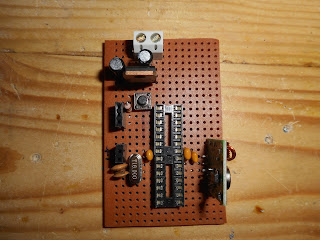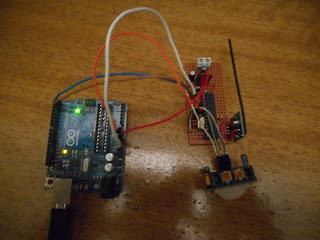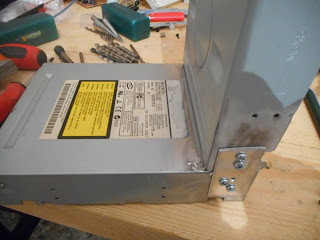This project is part of a failed project I had in mind, my basic aim was to make a 3 transmitter - 1 receiver construction, and have the 3 transmitters placed in different spots of a location and when someone pass in front of them they could send a radio signal to a receiver, which could be placed anywhere, unfortunatelly I had to find out by the hard way (after lot of trial & error and lot of reading) that this can't happen due to the fact that these transmitters work at 433 Mhz and when more than one transmitters are turned on, the signals of them conflict and the result is random, most of the time they didn't work, but when only one transmitter is on the system works like a charm, well what can you say....you get what you pay and for 1 euro this pair is good for its money.
Have in mind to increase the distance we have to make some modifications :
A) Supply more than 5V voltage to the transmitter, this can happen when you overlap the 7805 part and supply it directly toe its pin.
B) In arduino programming keeping "vw_setup" at low numbers, I have it at 600 which is very good
C) Place a wire both at receiver and transmitter acting as an antenna which should be around 17.3 cm
Following these advices we can have the best results at the distance part.
The whole project isn't hard to construct and it's arduino free, meaning that it can be programmed through arduino environment and later work completelly independent, following the pictures and the schematics it should take you a couple of hours to construct.
P.S. you will see a green wire at the receiver which was my first antenna, but it didn't work well so I had to modify it and place a straight 17.3 cm brown cable. Also you will see 3 leds, the reason was that in the beginning I had in mind to make 3 transmitters but it didn't work, so you will only need just 1 led, and 1 buzzer, there is also a pot which controls the loudness of the buzzer and also a switch which turns on/off the buzzer.
Code and Virtual Wire library here : https://www.dropbox.com/sh/wnjl7x154wvsp72/AABP6oAhA4S7u2TGpAeVwX64a?dl=0
Have in mind to increase the distance we have to make some modifications :
A) Supply more than 5V voltage to the transmitter, this can happen when you overlap the 7805 part and supply it directly toe its pin.
B) In arduino programming keeping "vw_setup" at low numbers, I have it at 600 which is very good
C) Place a wire both at receiver and transmitter acting as an antenna which should be around 17.3 cm
Following these advices we can have the best results at the distance part.
The whole project isn't hard to construct and it's arduino free, meaning that it can be programmed through arduino environment and later work completelly independent, following the pictures and the schematics it should take you a couple of hours to construct.
P.S. you will see a green wire at the receiver which was my first antenna, but it didn't work well so I had to modify it and place a straight 17.3 cm brown cable. Also you will see 3 leds, the reason was that in the beginning I had in mind to make 3 transmitters but it didn't work, so you will only need just 1 led, and 1 buzzer, there is also a pot which controls the loudness of the buzzer and also a switch which turns on/off the buzzer.
Code and Virtual Wire library here : https://www.dropbox.com/sh/wnjl7x154wvsp72/AABP6oAhA4S7u2TGpAeVwX64a?dl=0




























































